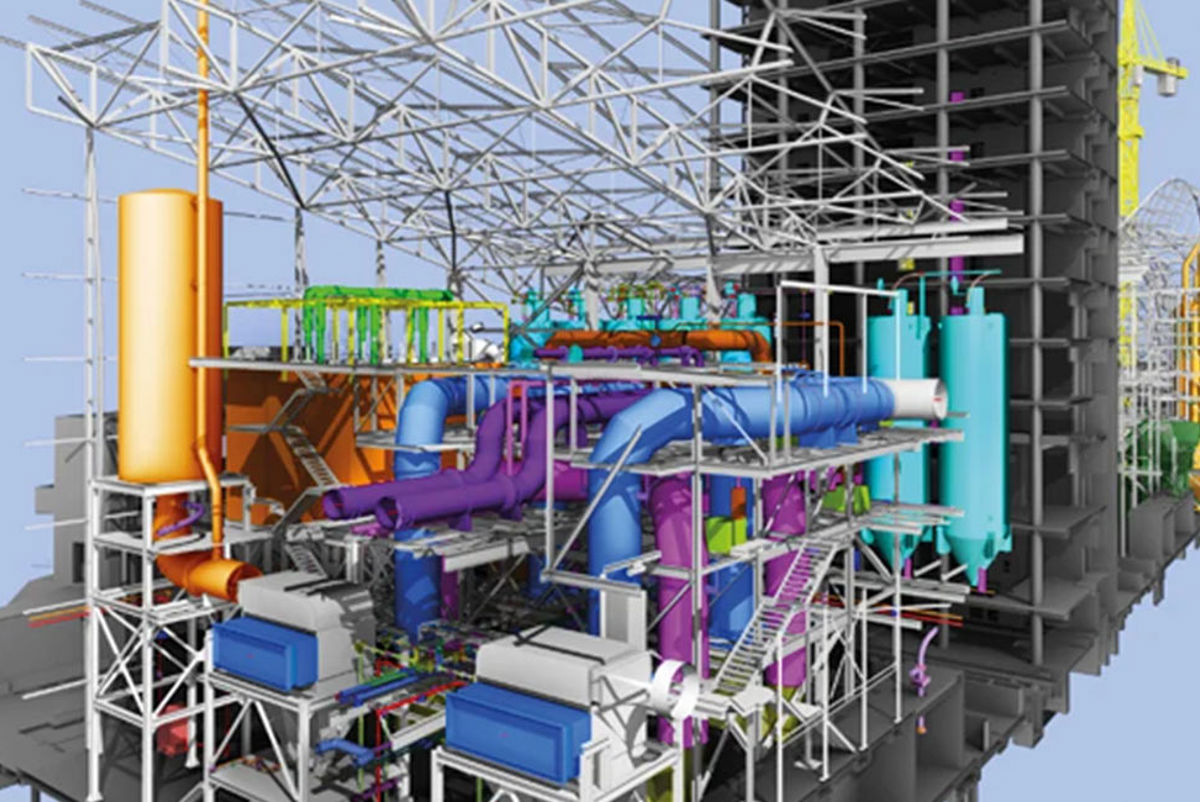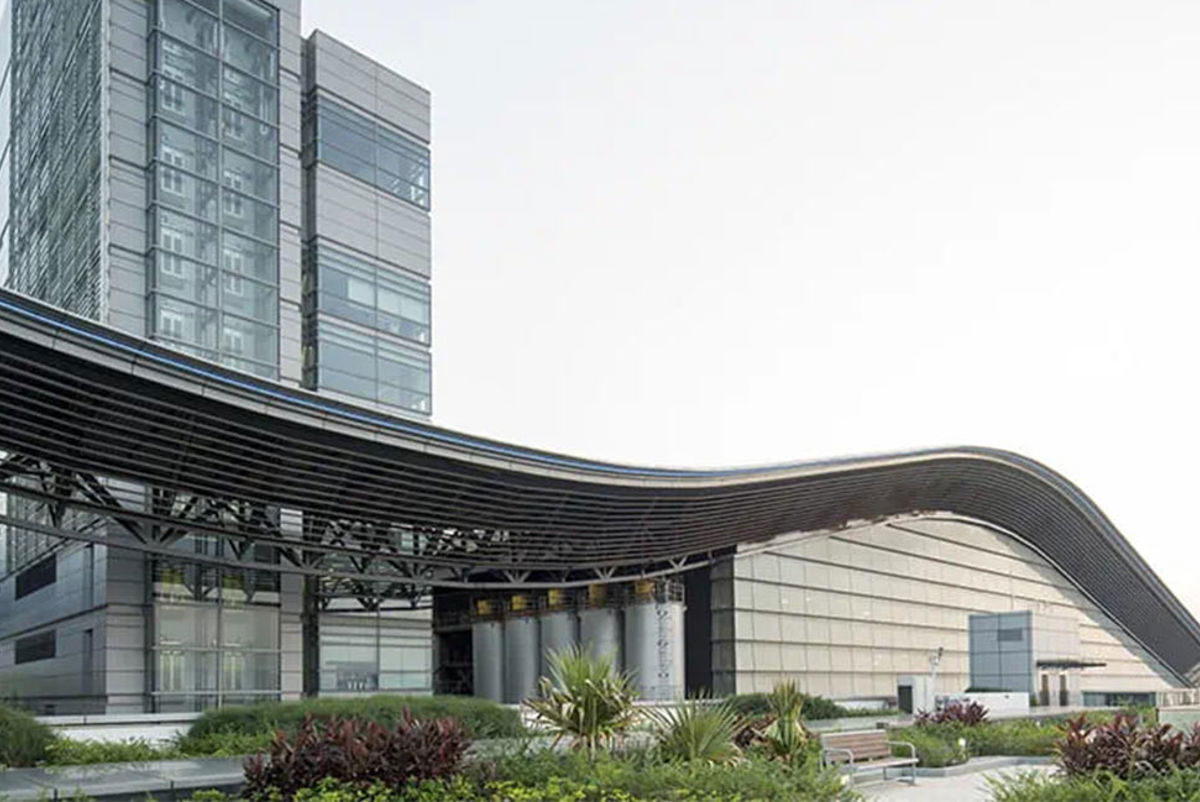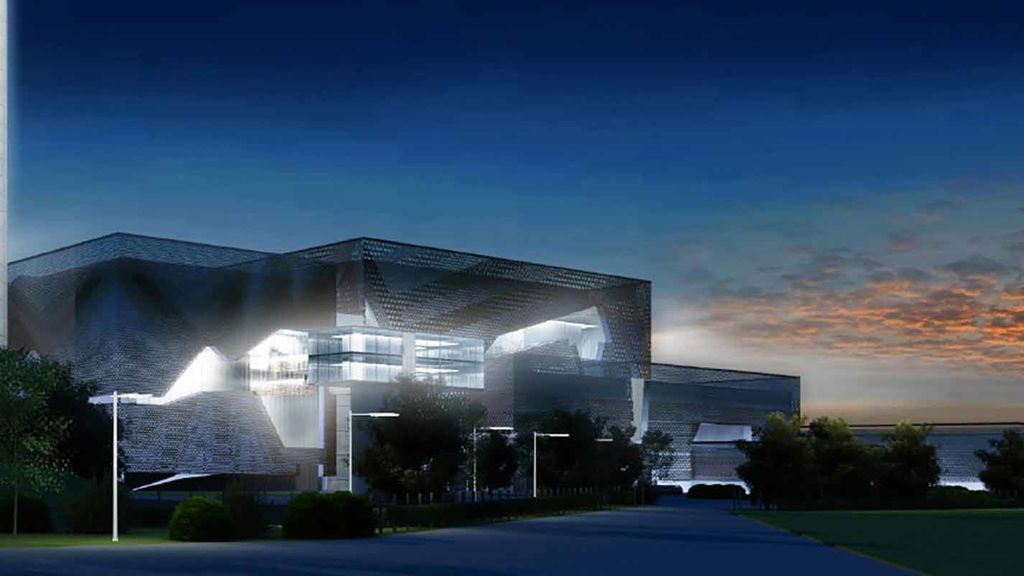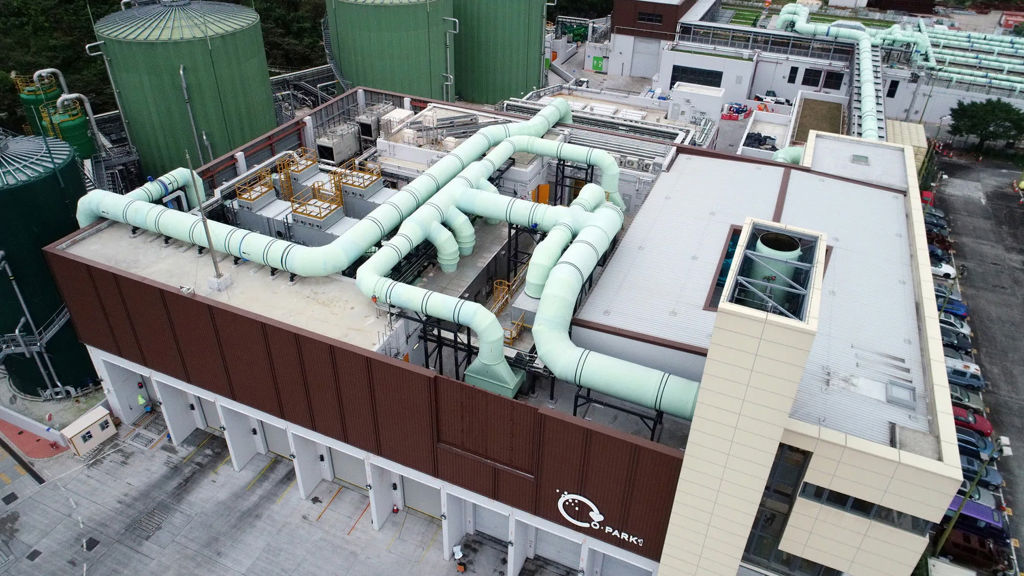Transforming waste into renewable energy at Hong Kong’s T-PARK treatment facility
T·PARK waste to energy facility

T·PARK is a state-of-the-art sludge treatment facility designed to provide an innovative and eco-friendly solution for Hong Kong’s sewage sludge disposal problem.
The project integrates a power station, spa resort and a sludge treatment facility. With its architecturally distinctive wave-like façade, the facility is the first of its kind in Hong Kong, and one of the largest sludge incinerators in the world.
It utilises fluidised bed incineration technology, capable of burning 2,000 tonnes of daily sludge, using the excess heat energy to generate electricity. At full operational capacity, an excess of 2MW of power is available every day. The building was completed in late 2014 with operation commencing in early 2015.
Waste to energy
T·PARK incinerates the sludge produced at Hong Kong’s 11 sewage treatment works, with the foul wet sludge that would otherwise be dumped in landfill reduced to ash, representing a reduction of about 90% by mass.
As the sludge burns, energy is conducted in the form of steam which is then transformed into electricity to power the plant’s operation. When running at full capacity, it can produce up to 2MW of surplus electricity for the public power grid. This means that not only is the T·PARK entirely self-sufficient, it also supplies its surplus electricity back into the electricity grid. Through the sophisticated flue gas treatment methods, any remaining air output is clean for environmental emission.
BIM
The design followed a Building Information Modelling (BIM) process that established complex three-dimensional models for coordination, drawings production, operational and maintenance simulation, as well as material take-off for the design and construction of the facility. It has facilitated the design, analysis and coordination throughout the project - from delivery routes for major equipment, pipe layout and routing through to the positioning of the plant during construction on site.



Efficient structural solution
The building’s flowing roofline blends with the surrounding scenery, reflecting the sea view in front and ridge lines at the back. Achieving this dramatic architectural roof structure posed considerable design challenges. The 400m-long roof spans over, and unites, the two incinerator plants and the centrally located administration tower. Our structural designers adopted a modular design, improving the ‘buildability’ of the roof and was key to achieving the building’s overall construction programme.
Holistic sustainability approach
T·PARK is highly sustainable, with 70% of the site landscaped or integrating green roof coverage. Potable and processed water is supplied by processing sea water through a desalination plant that can produce up to 600m³/day. Rainwater is collected for non-potable use, while wastewater is treated and re-used on site, including for the irrigation of the soft landscaping. The advanced recycling processes mean there will be zero discharge of wastewater from the facility, which protects the environment.
T·PARK attained the BEAM Plus Provisional Platinum rating, and has been awarded the Grand Awards in HKIE Structural Excellence Awards in 2016, as well as Merit Award (Completed projects - commercial buildings) in Green Building Awards 2016.

What we delivered
-
Providing an innovative and eco-friendly solution for Hong Kong’s sewage sludge disposal problem.
-
The T·PARK project integrates a power station, spa resort, and sludge treatment facility, the first of its kind.
-
At full capacity, T·PARK can produce up to 2MW of surplus energy for the public power grid.
-
Submarkets
-
Services used
Get in touch with our team
Projects
Explore more waste projects

Redeveloping Belgrade’s previously unmanaged Vinca landfill to a new waste-to-energy project
Vinca Landfill Redevelopment, Serbia

Concept design for the Leeds Residual Waste Management Centre
Leeds Residual Waste Management Project, United Kingdom

Turning Hong Kong's food waste into electricity
O-PARK1, Hong Kong

Turning pineapple wastewater into renewable energy sources
Bugo Cannery waste to energy plant, Philippines
